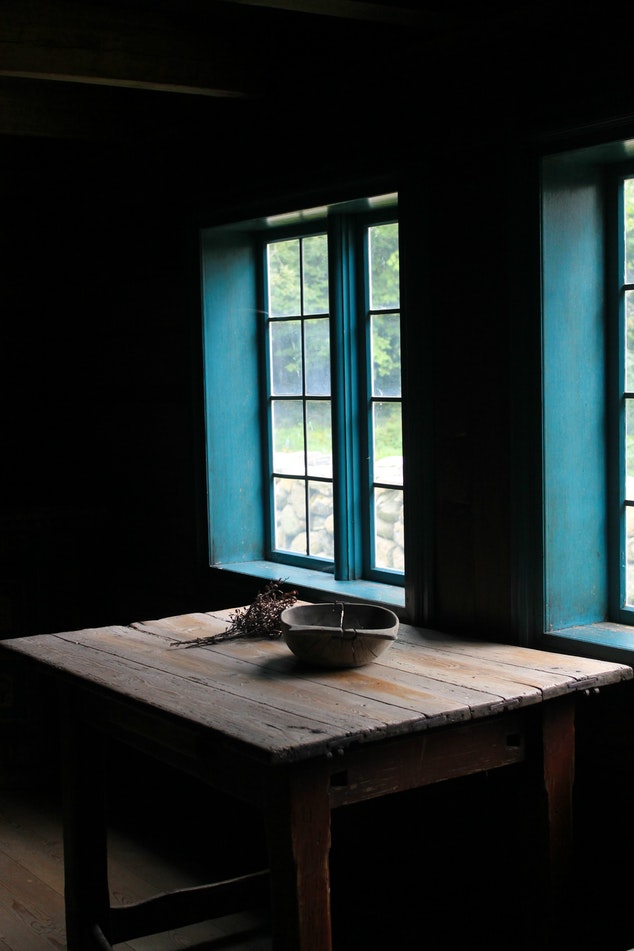Table of Presence
Author: Jim ThornberExodus 25:23–30; Leviticus 24:5–9; Numbers 4:4, 7–8
The table of presence stood along the north wall of the tabernacle, opposite the lampstand.
Made of acacia wood (symbolizing the humanity of Christ), and covered with pure gold (symbolizing His divinity), the table held twelve loaves of bread, which were eaten weekly by the priests.
Each loaf upon the table contained about four quarts of fine flour—making one loaf of unleavened bread approximately twelve inches in diameter and four inches thick—and was consumed every week by two “shifts” of priests when the fresh bread was placed upon the table. Literally translated, it is called the “bread of the faces,” indicating that God’s presence was always with His people. It was also called the “bread of the Presence” (Exodus 25:30), the bread that is “continually there” (Numbers 4:7), and the “holy bread”(1 Samuel 21:4–6, ESV).
The table of presence is closely associated with the ark of the covenant,
being the second article God described to Moses after the ark. In describing the ark, God said, “‘There I will meet with you, and from above the mercy seat, from between the two cherubim that are on the ark of the testimony, I will speak with you about all that I will give you in commandment for the people of Israel'”(Exodus 25:22, ESV). The ark is the meeting place of God and man, and the table of presence is the place where the communion between God and man gives us the strength to carry out His will. The blood-sprinkled ark is the basis of our fellowship with God, while the table provides the substance of our fellowship.
It is significant that not only were the ark and the table the same height, but also the grate around the altar, each a cubit and a half high (Exodus 25:10, 23). With the table situated between the altar and the ark, it teaches us that our fellowship with each other needs to be balanced equally between judgment (altar) and mercy (ark and mercy seat), and that fellowship, judgment, and mercy are equal in God’s sight. It also reminds us that as we travel toward God, we must first stop at the altar; then, having applied the blood of Christ to our lives, we may come to the table of presence and continue in fellowship with God and the Church because of God’s mercy, as seen in the ark.
The twelve loaves of unleavened bread expand our understanding of what it means to be in fellowship with God.
Whereas we must all meet with God individually and accept His free gift of salvation personally, the table shows us that God never intends our relationship with Him to be private. In the family of God, we are intimately connected to every other believer, and like the bread on the table, we are all equally set before the presence and face of God.
Scripture makes no room for individuals who remain solitary and private regarding their relationship with God. Instead, the Bible says that the Church is “many members”(1 Corinthians 12:12), “joined together”(Ephesians 2:21),”built together”(Ephesians 2:22),”fellow heirs”(Ephesians 3:6),”joined and held together”(Ephesians 4:16),and ultimately “caught up together”(1 Thessalonians 4:17) to join the other believers in heaven for all eternity. We were created to have fellowship with one another; for, like the bread, the same God who used the same materials and destined us for the same purpose, created us all. This truth is seen most vividly in the Early Church, where Luke tells us the first believers “devoted themselves to the apostles’ teaching and fellowship, to the breaking of bread and the prayers” (Acts 2:42, ESV).
Furthermore, there was only one table.
In spite of the fact that throughout the centuries Christians have split into many “churches,” there still remains only “one body and one Spirit—just as you were called to the one hope that belongs to your call—one Lord, one faith, one baptism, one God and Father of all, who is over all and through all and in all”(Ephesians 4:4–6, ESV).
Leviticus 24:5 (NIV) says, “Take fine flour and bake twelve loaves of bread, using two-tenths of an ephah for each loaf. “The Hebrew translation for “loaves of bread” is “perforated or pierced cakes.” This is to remind us of our Lord Jesus, who was pierced so that we could be spiritually and physically made whole. It was not without reason that Jesus told His disciples, “‘I am the bread of life. . . . If anyone eats of this bread, he will live forever. And the bread that I will give for the life of the world is my flesh'”(John 6:48, 51).

